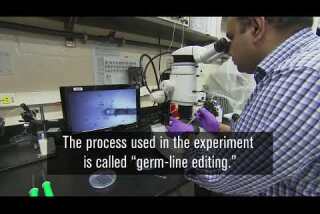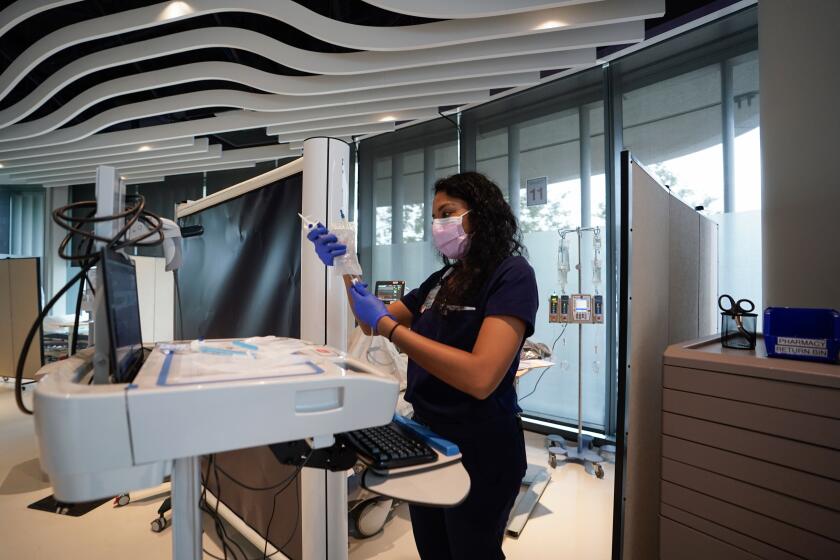Heart stents from Reva Medical do their job, then leave
Coronary stents, those tiny mesh tubes that prop open blocked blood vessels, have helped millions of people avoid invasive and complicated bypass surgery.
But stents cease to be needed after the blood vessels have healed. And that poses a problem. Metal stents are impractical to remove, so they remain in the heart, possibly risking long-term complications. And temporary, resorbable stents have had a mixed record.
This year, Reva received positive data about the performance of its Fantom line of bioresorbable scaffolds, as it calls its stents. It continues to collect data, hoping to demonstrate Fantom’s long-term superiority.
Made of a special polymer called Tyrocore, Fantom stents gradually dissolve in the body. Reva sells them in Europe. Eventually, it plans to enter the U.S. market. An estimated 1.8 million stents are implanted per year in the U.S., according to iData Research.
The actual number of patients with stents is smaller than the number implanted, because some receive multiple stents. The most stents implanted in any one person is 34, according to the Guinness Book of World Records.
Fantom stents have been shown to be as effective as metal stents in the short run, said Reggie Groves, Reva’s CEO. And long-term, the company is looking to provide evidence Fantom is superior to metal stents.
“If you put permanent metal in, it’s a foreign body in a vessel that’s trying to move, which it can’t because you have metal caging it,” she said.
The consequence is a risk of an “adverse event,” such as a heart attack. The stent also interferes with cardiac imaging, and is in the way if another procedure is needed.
While the risk is low, it can be totally avoided if the stent dissolves, Groves said.
“With our material, Tyrocore, the first thing that happens is it loses molecular weight,” Groves said. “So in about a year the molecular weight is mostly gone, and you end up with what’s like a powder, in the shape of a scaffold, but the strength is mostly gone. The vessel can expand and contract.”
Eventually, all the material is dissolved and removed, leaving behind a healed artery.
While it exists, the Fantom is visible by X-ray, useful in confirming the stent was correctly placed.
Fantom, Reva’s first product, received European marketing approval early last year. In the second quarter ended June 30, Reva reported $91,000 in net revenue, compared to no revenue for the same quarter a year ago.
The company earned $1.9 million in the quarter, compared to a loss of $503,000 in the year-ago quarter. However, that technical “profit” includes an unusual and difficult to understand element - the “mark to market” value of Reva’s convertible debt, Groves said.
Shares of Reva trades on the stock exchange of Australia. The company would like to eventually trade in the U.S., Groves said.

A study of 240 patients given the Fantom stent showed good results after two years, she said. The stent failed to work 4.6 percent of the time, technically called a target lesion failure. For competing resorbable stents, the failure rate ranged from 5.9 to 11 percent. The patients were treated in Europe, Australia and Brazil.
Competitors include Abbott Vascular. Abbott is researching new resorbable stents after discontinuing sales of one model last year, the Absorb. Abbott said sales were too low.
In early 2017, the U.S. Food and Drug Administration had warned that the Abbott Absorb stent had a higher rate of problems than Abbott’s permanent Xience stent. However, some stents had been implanted in arteries too small for the device to work properly.
Reva’s temporary stents differ from others in part because of the polymer, licensed from Rutgers University, Groves said. In addition, they’ve been carefully engineered to reduce thickness, and used in specific patient populations most likely to benefit.
The best candidates for Fantom stents tend to be younger, with at least more than five years life expectancy, Groves said, not specifying any precise cutoff age. Also, heavily calcified vessels are not suitable for the Fantom stents, nor are the smallest and largest vessels.
Blood flow to the smallest vessels are impeded by the thickness of the stent, and Fantom is not strong enough for now to treat the largest vessels. Reva continues to research ways to improve stent performance.
Fantom Encore, the latest in the Fantom line, received European approval this June. It has thinner struts. Reva plans to start selling Fantom Encore later this year.
Stent manufacturing takes place alongside research in Reva’s San Diego headquarters. That’s because tight integration of chemistry and manufacturing helps produce stents with the necessary specifications, she said.
“The core backbone for us is our chemical expertise in making this polymer, and we have all the expertise right here,” Groves said.
Stents became popular a few decades ago in conjunction with a procedure called balloon angioplasty, in which a small balloon is inserted into an artery in the groin or wrist, guided into the blocked artery, and expanded to open it.
After the blockage is cleared, the stent is placed to keep the vessel open while it heals. The procedure allows patients to leave the hospital sooner than the alternative of open heart surgery, and causes less discomfort.
But in some cases blood vessels eventually re-occlude. Called restenosis, this event requires further treatment. To stop this, metal stents are coated with a drug that inhibits restenosis. These “drug-eluting stents” have become the standard. Reva’s stents are also drug-eluting.
The company continues to monitor patients receiving its stents, hoping to provide more evidence of benefit over the long term.
Reva employs a total of 57 people, 50 in San Diego and seven in Europe. The company eventually intends to sell its stents in the U.S., Groves said, but it will take several years.
“The trial that would get approval would likely take us about three years once we start, and we have not started,” she said.
Meanwhile, Reva is selling and developing stents for other applications outside the heart. The company has European approval to sell a stent for use below the knee in peripheral artery disease.
And it’s working on a cancer treatment using its polymer for what are called embolic beads. These are placed inside blood vessels feeding the tumor to starve it of nutrients.
Related reading
The Incremental Risk of Coronary Stents on Postoperative Adverse Events: A Matched Cohort Study
Why the wrist is better than the groin — when it comes to stenting
FDA approves potentially ‘revolutionary’ heart stent
Science Playlist


In a first, scientists rid human embryos of a potentially fatal gene mutation by editing their DNA

10 interesting facts about Mars

Kids can add years to your life

LA 90: SpaceX launches recycled rocket

Ocean temperatures warming at rapid rate, study finds
bradley.fikes@sduniontribune.com
(619) 293-1020
Get U-T Business in your inbox on Mondays
Get ready for your week with the week’s top business stories from San Diego and California, in your inbox Monday mornings.
You may occasionally receive promotional content from the San Diego Union-Tribune.








